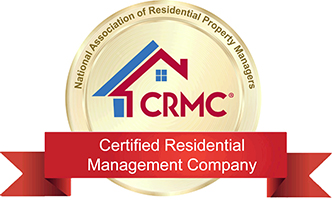
After teaching property management courses for the last couple years, the one question I will nearly always get regardless of which class I am teaching, is “how does the eviction process work?” So I thought I would take you through the basics of the process to answer that question. For the purposes of this article, I will keep to the basics and not discuss all the “what if” scenarios that can be a part of the process. I will only consider eviction for non-payment of rent. However, there are many other reasons why a tenant may be evicted based on not complying with the lease. These reasons can range from having an unapproved pet to criminal activity on the property. But since non-payment of rent is by far the most common reason for eviction, I will focus on that.
Of course the first thing that triggers the process is the tenant doesn’t pay rent on the due date. By Arizona law, the day after rent is due, the tenant can be served with the “5 Day Notice to Pay or Quit.” This is the first step in the legal process to evict the tenant. There are only two ways to legally serve notice in the state of Arizona, personal service or certified mail. Therefore, the notice must be served in one of these two manners. Because of the challenge of finding the tenant at home and getting him or her to actually answer the door if he or she is home, the most practical way to serve notice is to send it via certified mail. In the state of Arizona, a letter sent via certified mail is assumed to be received 5 days from the day it was sent. So whether or not the tenant signs for or picks up the certified mail letter, by law it is assumed to have been received that fifth day.
From that point, the tenant has five days to make the payment or they remain in violation of the lease. This is the point where the landlord can continue with his or her legal option to obtain an attorney (I’m assuming you’re using an attorney and not trying to do it yourself), get a hearing date and proceed with the eviction. This is what I always recommend for our clients because this keeps the landlord in control. If the tenant comes forward with the rent at anytime during this part of the process, the landlord can choose to accept it. But if the landlord delays to proceed with the legal process on the promise from the tenant that they will pay “this Friday,” that payment almost never comes in. That extra time turns into more time that the landlord doesn’t receive rent for the property.
Assuming the tenant doesn’t pay the rent, the next step is the eviction hearing. Your attorney will have provided proper notice to the tenant about the hearing date and time, provided the proper paperwork to the courts and handled all the miscellaneous items that need to be addressed. More often than not, the tenant will not appear at the hearing. That will result in a default ruling for you, the landlord. But if they do appear in court, the judge will ask only one question of them, “Did you pay the rent?” If a tenant responds, “No, but…” the judge will explain to the tenant that they are not there to discuss the other issues, but only the fact of whether or not the rent was paid. If the fact is that they did not pay rent, it’s a very quick hearing and the ruling will be for the landlord.
Upon ruling for the landlord, the judge will typically give the tenant 6 days to be out of the property physically. If after the 6th day the tenant is not out, the landlord can file for the “Writ of Restitution.” This involves contacting the constable’s office to have the tenant physically removed by the constable. This process usually takes two or three days. You will need to be ready to move quickly, because you will usually only get a few minutes notice that the constable is on his or her way to the property and you need to meet them at the property with keys. You will also want to arrange in advance to meet a locksmith to re-key the property or a handyman to change the locks. Upon arrival at the property, if the tenant is not physically out, the constable has the responsibility of physically removing them.
Once you as the landlord have possession of the property, you may have to deal with any remaining belongings. That is an entirely different process that is beyond the scope of this article, but it makes things very complicated. If nothing is left in the property, it’s a matter of getting the property cleaned up and rent ready for the next tenant.
For a simple non-payment of rent eviction, the eviction process usually takes approximately 30 – 45 days from the date the rent was not paid to the date the landlord has possession.
So if you ever have to do an eviction, now you know some of the basic steps that must be followed. Don’t forget, the best way to significantly decrease the odds of having to go through this process is proper tenant screening on the front end, before the tenancy begins.





